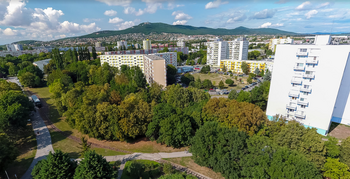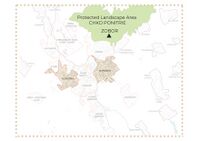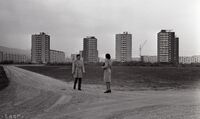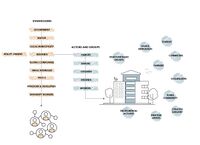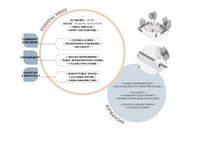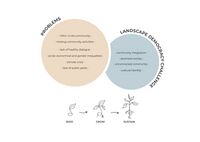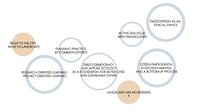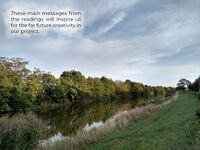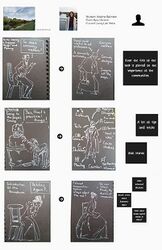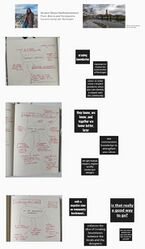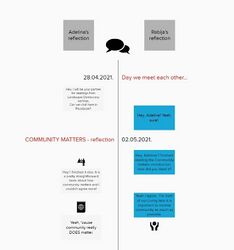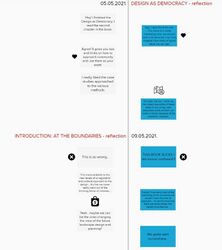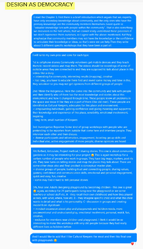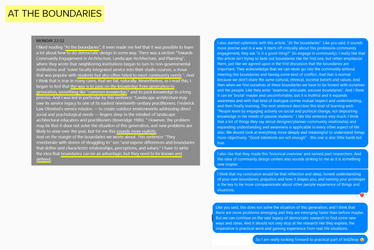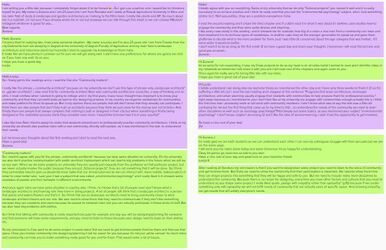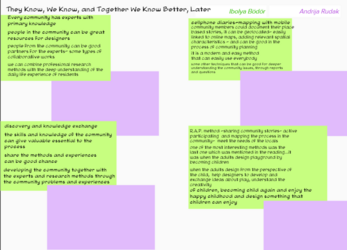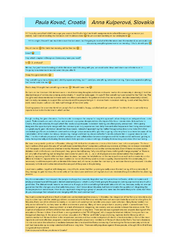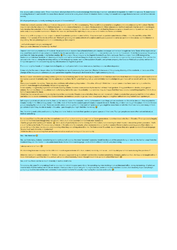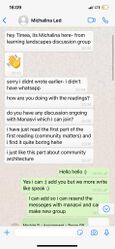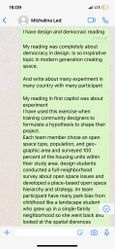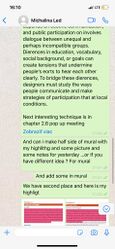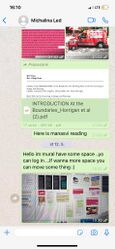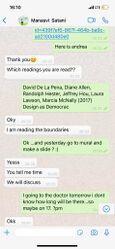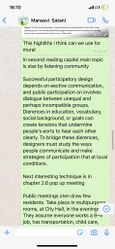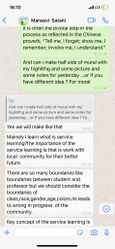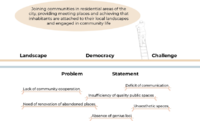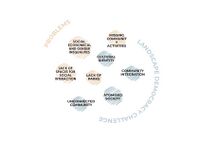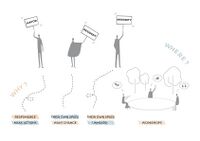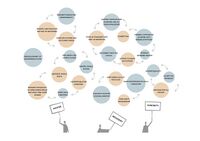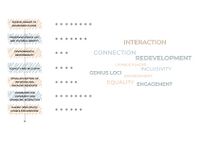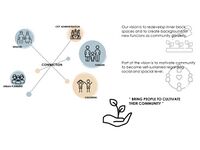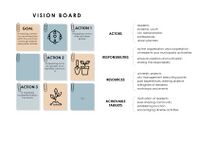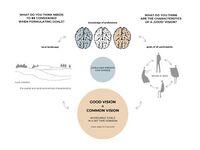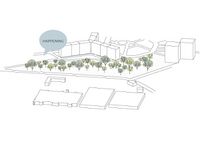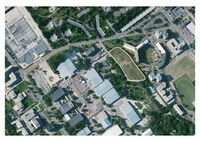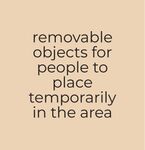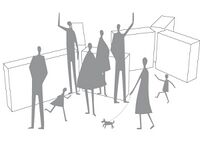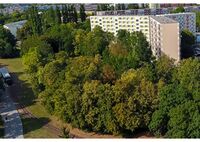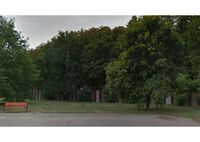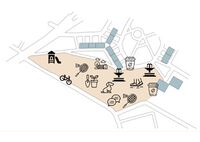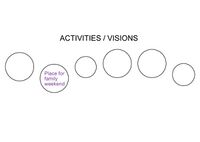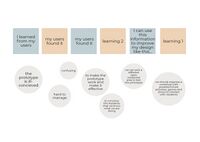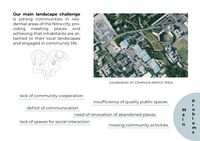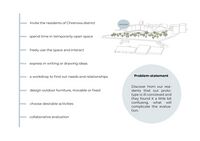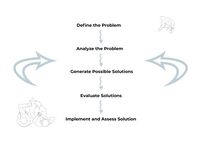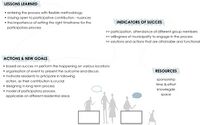LED2LEAP 2021 - Nitra Team 1
>>>back to working groups overview
For help with editing this Wiki page use this link.
For assignments and key readings use this link.
Landscape Democracy Rationale
Phase A: Mapping Your Community
Welcome to Your Community and Their Landscape
- Our mapping area & living lab is situated in Nitra which is in western Slovakia at the foot of Zobor mountain in the Nitra River valley and also in the Danubian Lowland. The city is divided into 13 urban districts and Nitra is also one of the oldest cities in Slovakia the polulation is about 78. 000 in the picture we can see the whole city also the 2 choosen residential quarter areas Klokočina- the biggest one, and Chrenová. As I mentioned Nitra lies between lowlands and highlands, mainly arable lands are around the city. The city is divided with the river Nitra-which is also an ecological corridor. In fact Nitra is the greenest Slovak city- there is 140 m2 of urban green space per inhabitant. from the whole are of the city urban green areas takes 2,75 % - which are mainly city parks and forests are about 16,41 % belongs here the landscape protected areas as Ponitrie and Dvorčiansky les.
These residential quarters KLOKOČINA and CHRENOVÁ were built as prefabricated blocks of flats in the 70s and 90s of the 20th century. Inner spaces of the blocks of flats are filled with greenery and some artwork of sculptors and it was supposed to serve as sport and relax areas but this function is degradating.
Socio-economic prosperity is mostly concentrated in the city center of Nitra but there are some spots in residential quarters such as shopping center, restaurants and bars concentrated in few spots and there are also some socio-economic events such as exhibitions in Agrokomplex and Botanical garden, market festival or sport events.
Groups of Actors and Stakeholders in Your Community
- The main social groups living in the settlement are families, seniors, children, students and workers. They include several groups with common interests or background. Smaller but not less important are etnic groups.
- Stakeholders are an integral part of the urban scene and community and have the power to influence urban landscape and therefore also peoples lives.
Relationships Between Your Actors and Groups
- Needs and Aspirations
Concerning needs and aspirations we defined three basic pillars for designing the city and urban spaces. These are: community and wellbeing, sustainability, and main topic of our seminar, Landscape and democracy.
Esstential needs and quality life in the city are centered around these premises, they are already secured in some extent and form: Basic needs are economic, social, public services and safety for everyone. Following needs are: culture and events, recreational possibilities, inclusivity, in the name of sustainability: healthy environment, public transportation system and cycling path system. Others connected to landscape and democracy are quality public spaces, accesible nature and green infrastructure in the city.
As main aspirations for future plannig we percieve: livable neighbourhood for people in residential quarters, bringing life and function to forgotten places, mostly inner-block spaces, ... important aspirations are also: inclusivity, community and fellowship, bringing people together to share knowledge and values between groups and generations. In designing, we would also like to implement and consider cultivation gene, which is important to people in Nitra region.
- Landscape Democracy Challenge and Problems
The integration and organisation of communities is the biggest challenge in urban settlement Chrenová and Klokočina in the city of Nitra and this challenge is caused by atomised society or community. These challenges are closly linked to the problems such as „Who is the community?“ There is a lack of healthy dialogues between individual groups wheather those who have the power or those who are impacted and also between themselves. There are also community activities and public parks that are missing. The city of Nitra considers sustainability to be the most important as a problem solution and recognize 3 main pillars: Seed, grow and sustain which means that in everything we participate in we have a certain part of responsibilities for maintaining what we have sown.
- Power Mapping
Residents and people living in the area of settlement are most impacted by character of urban landscape, yet they hold very little power in decision making. These are social groups like families, children, seniors, students. On the other hand, industry groups, investors, reality owners or developers share strong economic interests and have much more power resulting in forms of landscape and urban planing. In creating more organised and connected community we see an opportunity to increase their voice and power to make things happen.
Summary of Your Learnings from the Transnational Discussion Panel
- Discussion with students from different countries and universities offered us various perspectives on communities and how important it is to know our community. Cooperate with the inhabitants and know the problems and interests directly from them. The presentations of other students were also very inspiring and will help us to improve our futher analyzes.
Theory Reflection
• Editors Shelley Egoz, Karsten Jørgensen, Deni Ruggeri (2018): Defining Landscape Democracy (introductory chapter)
Common characteristics of landscape democracy: citizen participation in decision-making and a bottom-up process. While each situation has to be handled according to specific social and cultural manners, the underlying doctrine must remain social equality. Langhorst argues that various systems of neo-liberal restructuring are threatening democracy. He proposes adopting the concept of ‘assemblage’ and operating in fluid environments with various human and non-human actors that intersect and interact’.
• Wilson, Barbara (2020): Disorientation as a Learning Objective
The main purpose of this article was to point out the existence of white racism against black people, and show how it can impact on planning practice on the example of Friendship Court in Charlottesville, VA.
• LED Team (2019):Landscape Education for Democracy (Chapters 1-3, InBo Special Issue)
- Right to the city – right to landscape
- Participation must become more than just a technique but an ethical stance towards greater ecological democracy in landscape change
- Landscape architects must create new ways to make participation both more effective, meaningful and engaging
- Democratic transformation requires design and planning practitioners to partner with communities - recognize social groups, landscape injustice
• Hester, Randolph (2006): Design for Ecological Democracy
- Local desicion making and future habitation should be designed from GRASROOT LEVEL through direct participation actions implementing local wisdom, attachement to place, networks of interconnection and ecological thinking
- Local design in context of external forces and ramification
- Direct democracy and applied ecology as a foundation for better cities and sustainable future
• Schneidewind, Uwe et al (2016): Pledge for a Transformative Science - A conceptual framework
Transformative Science as a paradigmatic, institutional and methodological reform program. Also a self-reflexive program for further developing science, by critically questioning and reflecting on its own role in societal transformation processes.
Phase B: Democratic Landscape Analysis and Assessment
Adelina Belinska and Rabija Hadžimehmedović Correspondence
Klaudia Dočekalová and Kristina Komšo Correspondence
Zuzana Vinczeová and Lucija Korić Correspondence
Ibolya Bödör and Abdrija Rudak Correspondence
Silvia Smoláriková and Rea Badanjak Correspondence
Anna Kulperová and Paula Kovač Correspondence
Tímea Žolobaničová, Michalina Led and Manasvi Satani Correspondence
Phase C: Collaborative Visioning and Goal Setting
The Scene in Your Story of Visioning
- Our main landscape challenge is joining communities in residential areas of the Nitra city, providing meeting places and achieving that inhabitants are attached to their local landscapes and engaged in community life. The main problems are:
- lack of community cooperation - deficit of communication - insufficiency of quality public spaces - need of renovation of abandoned places - unaesthetic spaces - atomised society - lack of cultural identity - missing community activities - lack of spaces for social interaction
The Actors in Your Story of Visioning
- WHO and WHY?
The main and most important characters in our story are mayor of the city Nitra, residents of the settlement Chrenová and Klokočina and ethnic minority from this community. The mayor has the power to make actions and he is responsible for them. Residents are important mainly because those actions are made for them to have better environment and have more livable places and ethnic groups and minorities are also part of the residents but they have different goals then other locals.
- WHERE?
We consider workshops or moderated interactive events to be the most effective and creative way how to engage with all of the community member.
The Story of Visioning
- How we developed goals?
The 3 actors in our story have similiar or same goals but for example we pointed out the minorities because they have more specific goals unlike regular residents such as: equality and amicable places for everyone. It is very important for Mayor that citizens take some responsibility for their environement so the Mayor can make actions and redevelop abandoned places and make them more livable. For residents is most important for example function, connection, or healthy and aesthetic public space.
- How we manage to prioritaze them?
Of the stated goals we chose seven and we simply voted what is the most important goal for us.
- How our vision evolves?
The goals, that we consider as the most important are: - Redevelopment of abandoned places: by these places we mean inner block spaces, or spaces which are without any function. - Preserving genius loci and cultural identity: by these we mean continue in agricultural traditions, which are characteristic for Nitra region. - Connecting the community and enhancing interaction: by connecting the community we can motivate people to continue to develop their environment.
Our vision is bring people together and motivate them to create and cultivate their community. So our vision consist of redevelop inner block spaces and to create background for new functions - as community gardens, and motivate community to become self-sustained regarding social and spacial level.
- From visioning to strategy-building
With following actions on the vision board we aim to accomplish our goals. First step is mapping communities and open spaces then try to reach out to all members of an identified community and the last step of action would be organising moderated interactive events. All these actions will help us to enhance connection and interaction within the community by redeveloping open spaces.
Reflect on Your Story of Visioning
- What do you think needs to be considered when formulating goals?
During the co-designing / co-working process the knowledge of professions are required to be combined and translated to the local landscape. Focus on the topic of our project, joining the communities, change our point of view and see things from an other perspective. The important thing is to take into account the goals of all participants in the community - to understand what is important for each one, what each one of them would like to achieve - and find a common vision. That's how we can set the goals which fulfills the needs of the locals.
- What do you think are the characteristics of a "good" vision?
In our opinion good vision can be characterised by real achievable goals in a set time horizon, the aim and the main goals are clear, easy to interpret, with specific objectives. The working process is inspiring during achieving the main aim. Good vision is also local oriented according to the spatial and socio economical characteristics in the area which need to be determined and developed. Our desires or lacks are reflected in our visions. A good vision also takes into account that community participants can change their goal and dream of the community over time. It is a matter of fulfilling partial goals, but dreaming does not end during the whole period of community functioning.
Phase D: Collaborative Design, Transformation and Planning
Your Prototyping Action
Our Prototype would be a happening as a form of experiment, the point is to invite the residents of Chrenova district to spend time in temporarily open space, which is usually closed to public. Let the people freely use the space and interact. In practice we would print out the plan of the area, place them on certain entry locations and let people, participants express in writing or drawing their ideas about using the space based on their time spent in the area and potential they see. It would be possible to do the follow up activity - letting participants in groups design outdoor furniture, movable or fixed, in a form of simple model to animate their vision of using a space. The activities that occur or take place in the happening should be later considered in analysis and brought to designing process.
The Evolution of Your Prototyping Action
During the brainstorming we tried to come up with the most suitable prototype for our selected area. The first idea was to create a workshop for resident of Chrenová to find out their needs and relationships. During workshop we would provide them with various movable furniture and watch how they use and relocate it and what they would do in such space. We came to the conclusion that instead of the workshop we will do a small happening which would take place over the weekend when our selected area would be fully open.
The Plan Behind Your Prototyping Action
With this prototype we want to understand how a residental community park should be co-designed, to understand the local communities and their relationship and to understand the behaviour of the community members through community gardens.
- WHERE?
We focus on the residental areas in Nitra and in this specific prototype we chose the residental area Chrenová, specificaly it is a closed area that is located near the area of Chrenová and its block of flats and it is also part of the exhibiton area of Agrokomplex where various events are held throughout the year, mainly focused on agriculture. Agrokomplex is accessible only during the exhibition which means the the chosen area is also accessible only during the exhibition.
- WHO?
We are focusing on the residental are of Chrenova which means that our target group are the resident of chrenová.
- HOW?
We want to test this prototype through an event or festival during which we will offer to people our chosen area without any barrier and with free accessibility.
The Realization of Your Prototyping Action
- At our LED seminar we tried role-play to show how our prototype might look like. Since it was not physically possible to try out the movable furnitures we chose a digital option to present our prototype, using pictograms that represent various activities in our selected area. Our audience played the residents of Chrenová and their task was to place pictograms of activities on the plan of the selected area according to which activity they prefer more.
- The audience also had empty bubbles, which they could fill with different activities. These activities we presented were community gardens, places for barbecue, places for making yoga or sport, cycling, places for running, cafes for drinking coffee, playgrounds, playgrounds for dogs etc. As a result we counted what kind of activities appeared the most often. It means that these activies are the most attractive and desirable for people. So exactly these ones we should create at our spot.
Reflect on Your Prototyping Action
The discussion was very useful and we learned important things. We learned from our users that the prototype is ill-concieved and they found it a little bit confusing and hard to manage. We need to improve our prototype in order to make it effective and most importantly to make it work and convince the residents that we know what we are doing as architects. By improving we mean to pick another space that is fully open and where we can test our prototype. Lastly we should stick to our first idea during brainstorming which was to make a workshop with predetermined activities.
Phase E: Collaborative Evaluation and Future Agendas
Collaborative Evaluation and Landscape Democracy Reflection
Our main localization was residential quarter Chrenová. For our event we choose spot that is not usually open for people. Our landscape challenge is joining communities in the residential area via creating meeting places for the inhabitants and engaged their in community life. The main problems in our residential area were mainly lack of community cooperation and communication, lack of places for social interaction and community activities.
So how we managed to gather information for the collaborative evaluation?
Firstly, we invited the residents of Chrenová district, so they could spend time in temporarily open space. They could freely use space, as they wanted to. Also they had empty plans of the place, where they could draw or write their ideas about using this space. They also had posiibility to design outdoor furniture, move it in the way it would be convenient for them. The main problem for evaluation was that sometimes people misunderstood our tasks. So in the future we shoud make them more clear.
The Actors in your Collaborative Evaluation
The actors are the residents of Chrenová. These are families, seniors, young people, workers, students, landscape architects, stakeholders, childrens, ethnic nimorities, etc. If we will divide them on the groups of interests it will be sports enthusiasts, runners, mommies with strollers, dogwalkers, environmental activists, cyclists etc. The collaborative evaluation after our event will take place right after our workshops or prototyping actions. Also we can create discussions after our happening, it also can be in online-format, such as „stream“, for example.
Reflection on the Online Seminar
- It was very interesting experience for us. We studied not only landscape democracy, but also how to interact with each other within the team. Even more, everyone of us met a person from another country during correspondence and reading literature. We were trying to get over ourselves.
- We learnt different methods and techniques of how to implement landscape democracy in real life, how to involve residents in creating new places, how to create this places comfortable for everyone. It is hard, because we are all different. And I think that the main task is not to create a landscape/place that is the same for everyone, but one that would be beautiful in its diversity.
Reflection on the Living Lab Process
- Living lab process was quite a challenge for our team because of the obstacles due to Chinese Covid-19 pandemic. Firstly, we choose the most problematic place in the city of Nitra – residential quarter Chrenová. We wanted to create there community garden. It would be actual for the residents since Chrenová was built as prefabricated blocks of flats in the 70s and 90s of the 20th century. Then we decided who would be our actors. Mainly it is residents of Nitra and some groups by interests.
- We also read additional literature to understand deeply how to implement methods of the landscape democracy.
- Our main landscape challenge was to join communities in residential areas of the Nitra city, providing meeting places and achieving that inhabitants are attached to their local landscapes and engaged in community life.
- Our prototyping action was impossible to carry out in real life due to the Chinese pandemic. But perhaps invented happening, methods of evaluation of the challenge, we will be able to carry out in the future.
Your Living Lab Code of Conduct
Main lessons that we would bring to the process is to enter with flexible methodology and approach, as we would be working and cooperating with community of individuals with various needs, perspectives, visions and stories with the place.
To present the outcome of happening and relfect with the community. Discuss the visions of individuals and get the idea of general perception. We see the importance in further motivating the community, by keeping the residents updated about actions that took place and the ones following. Also maintaining the contact and make everyone feel included, as their contribution is crucial to the process.
For us the main indicator of succes is the attendance during happening and also seeing the interaction between groups of community, so individuals could realize and consider the needs of others, to encounter a “strangers world”.
Process Reflection
What do you think are good or useful indicators in your challenge?
- Motivation of residents to participate
- Interaction in between groups in the participatory process
What do you think is the biggest challenge in collaborative evaluation?
- Ensuring equal space for contribution
- Miscommunication during process of participation and evaluation
How this process changed your perception (as a planner) on the site and on the designing process?
- The importance of considering the knowledge of locals and residents. Taking their experience and stories as valuable source of information
- The importance of transparency and working with various of social groups
- Perception of social and intangible aspects and layers of the site
Good indicator for us during the challenge was that people wanted to participate in our activities. Because if people had big motivation to take part, it was much more easier to communicate with them. The hardest task was to find with the residents „common language“, so we could clearly understand each other. Also it was complicated to engaged everyone to ensure equal space for contribution into our challenge. And as a result this challenge change our perception, so we can understand the importance of the local residents, because they know very good the place they live in. So these people are valuable source of information. And also we understand that all social groups who are living in our residential quarter are important, because they all use this space. So we should create places which will be comfortable for everyone.
